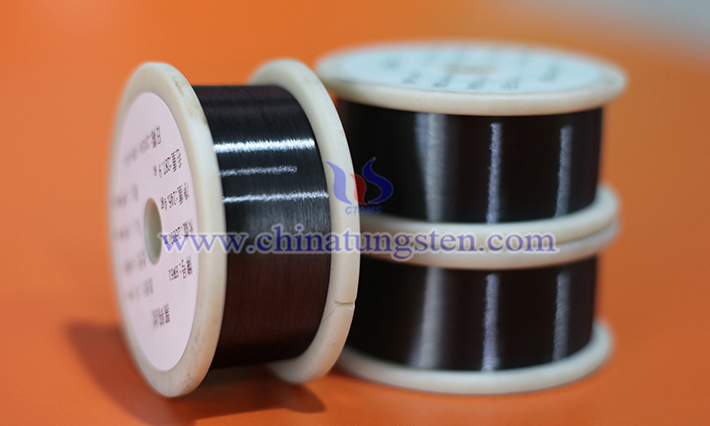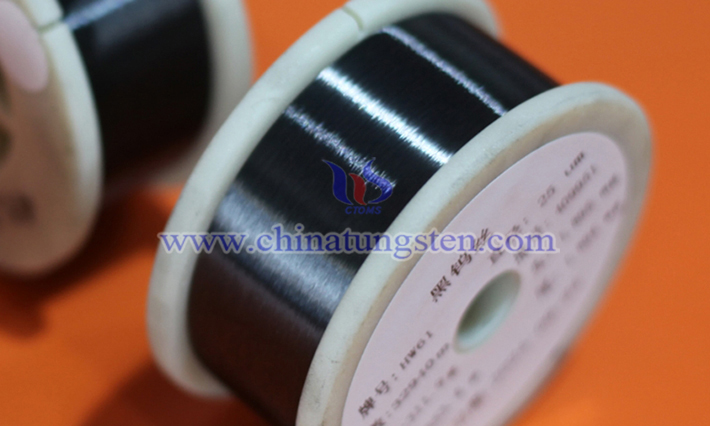Chemical and Physical Properties of Tungsten wire
- Details
- Category: Tungsten Information
- Published on Wednesday, 13 August 2025 16:25
Tungsten wire's unique chemical and physical properties make it widely used in light bulbs, electronic devices, and high-temperature industrial applications.

I. Chemical Properties of Tungsten Wire
1. Chemical Stability:
Tungsten is chemically stable at room temperature and does not readily react with oxygen, water, acids, or alkalis.
At high temperatures (such as those found in incandescent lamps), tungsten slowly oxidizes to form tungsten trioxide (WO₃). Therefore, bulbs must be filled with an inert gas (such as argon or nitrogen) or evacuated to prevent oxidation.
Tungsten wire exhibits strong corrosion resistance, exhibiting good corrosion resistance to most acids (such as hydrochloric acid and sulfuric acid), but may react in strong oxidizing acids (such as concentrated nitric acid) or strong alkaline solutions. 2. Reaction with Non-metals:
At high temperatures, tungsten can react with non-metals such as carbon, boron, and silicon to form hard compounds, such as tungsten carbide (WC), which is often used in the manufacture of wear-resistant tools.
At high temperatures, tungsten can react with halogens (such as fluorine and chlorine) to form volatile halides.
3. Oxidation Resistance:
Tungsten wire exhibits some oxidation resistance at room temperature, but an oxide film forms on its surface at high temperatures.

II. Physical Properties
1. High Melting Point:
Tungsten has an extremely high melting point of approximately 3422°C (6192°F), the highest of all metals. This makes it an ideal material for incandescent filaments and high-temperature furnace components.
2. High Density:
With a density of 19.25 g/cm³, close to that of gold and uranium, tungsten wire possesses high strength and mass.
3. Hardness and Strength:
Tungsten possesses high hardness (approximately 7.5 on the Mohs scale) and tensile strength, maintaining its mechanical strength, especially at high temperatures. Tungsten wire exhibits excellent ductility after stretching, allowing it to be formed into extremely fine filamentary structures.
4. Electrical and Thermal Conductivity:
Tungsten has low electrical conductivity (approximately one-third that of copper) and high resistivity (approximately 5.6×10⁻⁸ Ω·m), making it suitable for use as a filament. Its high electrical resistance allows it to heat up rapidly and emit light when current is applied.
The thermal conductivity is approximately 173 W/(m·K), demonstrating excellent thermal conductivity.
5. Coefficient of Thermal Expansion:
Its low coefficient of thermal expansion (approximately 4.5×10⁻⁶/°C) provides excellent dimensional stability at high temperatures and resists deformation.
6. Emission Properties:
Tungsten exhibits excellent thermionic emission properties and is commonly used as cathode material in electron tubes and X-ray tubes.
III. Characteristics in Practical Applications
1. Incandescent Filament: Tungsten wire's high melting point and high electrical resistivity enable it to emit light at high temperatures and have a long lifespan. However, at high temperatures, tungsten slowly sublimates, causing the filament to become thinner and eventually break. 2. High-Temperature Environments: Tungsten wires can withstand temperatures exceeding 2000°C in a vacuum or inert gas environment, making them suitable for use in high-temperature furnaces, welding equipment, and other applications.
3. Machinability: Tungsten is relatively brittle, and processing it into fine filaments requires a high-temperature drawing process. The finished tungsten wires exhibit excellent flexibility.
- Chinatungsten Online: www.tungsten.com.cn
- CTIA GROUP LTD: en.ctia.group
- Tungsten News & Price: www.ctia.com.cn
- Molybdenum News & Price: news.molybdenum.com.cn
- Tel.: 86 592 5129696; Email: sales@chinatungsten.com



 sales@chinatungsten.com
sales@chinatungsten.com